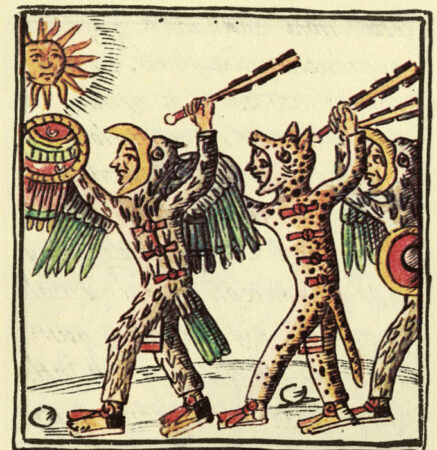A newly discovered species of ankylosaur had a bizarre club on its tail unlike that of any known dinosaur.
With its flat surface and sharp blades along the sides, this unique structure at the back end of Stegouros elengassen, a species of ankylosaur that lived between 72 million and 75 million years ago, strongly resembles an Aztec war club called a macuahuitl, say paleontologist Sergio Soto-Acuña and colleagues. The tail’s shape may indicate an early evolutionary split in the ankylosaur lineage, the researchers report online December 1 in Nature.
Soto-Acuña, of the Universidad de Chile in Santiago, and his team identified the new species based on a nearly complete skeleton discovered in the dry Patagonian region of Chile. With its slender limbs and unusually short tail, S. elengassen already looked markedly different from other ankylosaurs in many ways. But its cranium pegged the creature as a type of early ankylosaur, the team found.
 Stegouros elengassen’s flat tail weapon is unlike that of any known dinosaur. It strongly resembles an Aztec war club called a macuahuitl (shown in this 16th century illustration), a flat wooden club with sharp obsidian blades along the sides, researchers say.The Field Museum Library/Wikimedia Commons
Stegouros elengassen’s flat tail weapon is unlike that of any known dinosaur. It strongly resembles an Aztec war club called a macuahuitl (shown in this 16th century illustration), a flat wooden club with sharp obsidian blades along the sides, researchers say.The Field Museum Library/Wikimedia Commons
Ankylosaurs were the heavily armored tanks of the dinosaur world, their bodies and heads shielded by rugged plates of bone. Different species also sported a variety of other anatomical weapons, from shin-shattering clubbed tails to spiky skulls (SN: 6/12/17; SN: 7/19/18). But S. elengassen’s strange tail is unique among these weapons.
Few ankylosaur species have been dug up in the Southern Hemisphere. Those that are known, including S. elengassen, may be some of the most primitive species of the group — and may even represent a separate branch of the armored dinosaurs. That branch possibly split from other ankylosaurs, including the lineage that includes the genus Ankylosaurus, early in their evolutionary history, during the mid-Jurassic Period around 167 million years ago, the researchers suggest.

